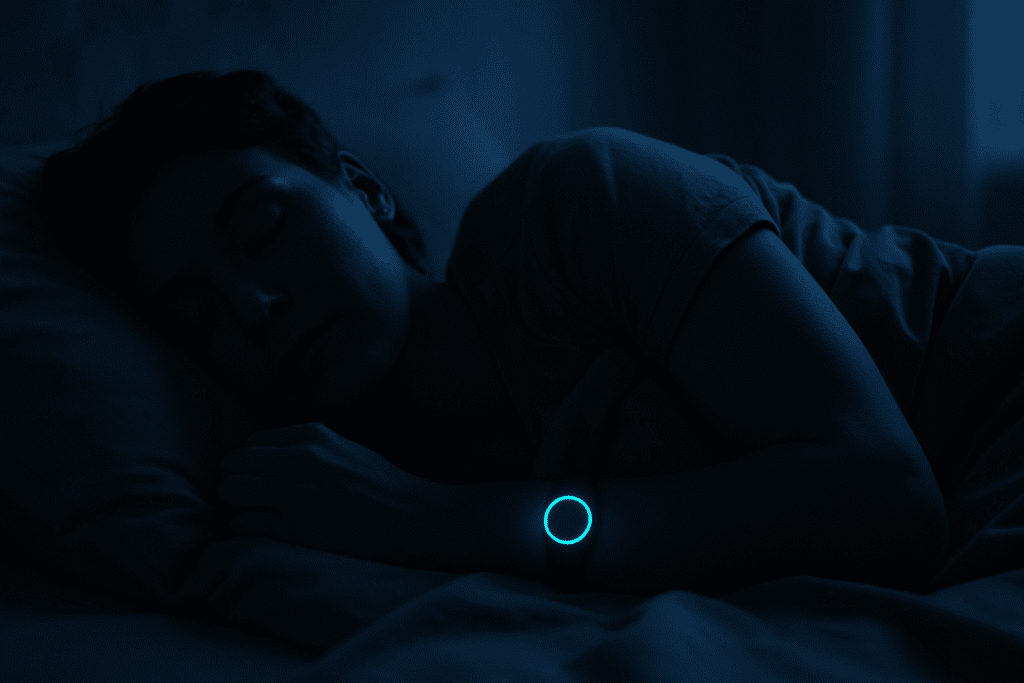When it comes to achieving peak performance and sustaining long-term endurance, heart health is a non-negotiable foundation. Whether you’re an athlete striving to optimize your stamina or someone looking to maintain vitality into your later years, knowing how to check if your heart is healthy at home can offer valuable insight into your cardiovascular well-being. Fortunately, you don’t need a cardiologist’s equipment to begin understanding your heart’s condition. With careful observation, informed self-assessment, and consistent lifestyle monitoring, you can develop a reliable picture of your cardiovascular status—one that empowers you to take proactive steps toward a healthier, stronger heart.
Understanding how to check heart health isn’t just a matter of curiosity; it’s about preventative care. Cardiovascular disease remains a leading cause of death worldwide, often progressing silently until significant damage has occurred. That’s why early recognition of subtle indicators can make a substantial difference. From monitoring resting heart rate to assessing physical response to exertion, there are clear, evidence-based methods you can use at home to detect signs of good cardiovascular health or potential red flags that may warrant further evaluation. This article explores these methods in depth, helping you understand how to tell if your heart is healthy and what steps you can take to enhance your endurance, resilience, and overall performance.
You may also like: Smart Nutrition Choices for a Healthier Lifestyle: What to Know About Whole Grain Rice and Whole Wheat Rice

The Resting Heart Rate: Your Baseline Indicator
One of the most accessible and revealing tools in self-monitoring is your resting heart rate (RHR). Typically measured first thing in the morning before any physical or mental stimulation, your RHR provides insight into how efficiently your heart is functioning. In adults, a normal RHR ranges from 60 to 100 beats per minute, though well-conditioned athletes may exhibit rates as low as 40. The key here is consistency—tracking your resting heart rate over time can help you determine whether your heart is adapting to physical training or showing signs of strain.
If you’re asking yourself how to check if your heart is healthy at home, start with this simple measure. To do it manually, place your index and middle finger on your wrist or neck, count the beats for 60 seconds, and record the result. Alternatively, many fitness trackers and smartwatches can provide accurate readings with continuous data that allows for trend analysis. A consistently elevated RHR may indicate stress, overtraining, dehydration, or underlying cardiovascular issues, while a decreasing RHR over time could suggest improved cardiovascular conditioning—a sign of a strong heart.
Blood Pressure: A Silent Marker of Heart Health
High blood pressure, or hypertension, is one of the most common risk factors for heart disease. Often dubbed the “silent killer,” it can inflict damage without overt symptoms. Home blood pressure monitors have become widely available, affordable, and reliable. They allow you to check cardiovascular health from the comfort of your home with minimal effort. Ideally, your blood pressure should remain below 120/80 mmHg for optimal heart function, though individual variation and medical history can influence targets.
Learning how to check heart health via blood pressure readings can reveal important trends. Elevated readings over several days—or a single high reading accompanied by symptoms like chest discomfort or dizziness—deserve medical attention. On the other hand, consistently healthy readings are among the clearest signs you have a healthy heart. They reflect balanced vascular tone, effective blood flow, and minimal cardiac stress during rest.

Heart Rate Recovery: The Athlete’s Indicator
A lesser-known but highly predictive measure of heart health is heart rate recovery (HRR)—the speed at which your heart rate returns to normal after exercise. This metric reflects autonomic nervous system efficiency and cardiovascular conditioning. To measure HRR, perform a bout of moderate to vigorous aerobic exercise for several minutes, then stop and measure your heart rate immediately afterward. Then, measure it again after one minute.
A drop of 15 to 20 beats per minute within the first minute post-exercise is considered a sign of a good heart and well-regulated nervous system. Athletes often see drops of 30 beats or more. Conversely, a slow heart rate recovery may be a subtle warning sign of decreased cardiovascular resilience or underlying dysfunction. Incorporating HRR checks into your routine is especially valuable if you’re engaged in endurance training or high-performance athletics and want to ensure your recovery systems are working in sync.
Breathlessness and Physical Performance
One of the easiest subjective ways to determine how to tell if your heart is healthy is by evaluating your response to physical activity. If you can climb a flight of stairs, walk briskly, or engage in aerobic exercise without undue breathlessness, fatigue, or chest discomfort, that’s generally a sign of good cardiovascular health. Conversely, if simple activities leave you winded or lightheaded, it may be a sign to investigate further.
Knowing how to find out if your heart is healthy doesn’t always involve numbers; sometimes, it’s about paying attention to how your body feels. Keep a journal of your exercise habits and how you feel during and after workouts. Over time, you’ll gain a clear picture of whether your endurance is improving, plateauing, or declining. These observations, while informal, are part of how to see if your heart is healthy through real-world functional assessment.

Pulse Rhythm and Strength: Clues in Every Beat
Beyond just counting beats per minute, the quality of your pulse offers insights into circulatory health. A strong, steady pulse with regular rhythm is a hallmark of healthy cardiovascular function. Irregularities—such as skipped beats, fluttering sensations, or weak pulses—may be indicators of arrhythmias or other cardiovascular issues. While occasional irregularities may not always signal danger, frequent or persistent issues deserve evaluation.
Learning how to check if your heart is ok can start with simple mindfulness practices. As you lie in bed or sit quietly, take a moment to feel your pulse and assess its rhythm. Is it regular and strong, or does it feel erratic or faint? Developing this body awareness is an essential part of how to tell if you have a healthy heart. If you’re ever uncertain about what you detect, a wearable ECG-enabled fitness tracker or a visit to a health provider can help clarify.
Skin Tone, Extremity Temperature, and Capillary Refill
Some of the most subtle signs of good heart health can be observed visually. Good circulation, powered by effective cardiac output, ensures that your skin is well oxygenated and evenly toned. Cool, pale, or bluish fingers and toes may indicate poor peripheral circulation, potentially linked to compromised heart function. You can also perform a capillary refill test by pressing gently on a fingernail and observing how quickly the pink color returns. If it takes longer than two seconds, it could suggest circulatory inefficiency.
These kinds of observations are particularly helpful when considering how to check if your heart is healthy at home. They may not provide definitive answers but offer supporting evidence alongside other measures. Consistently warm hands and feet, clear skin tone, and quick capillary refill are signs of good cardiovascular health that align with efficient heart and vessel performance.

Sleep Patterns and Nighttime Symptoms
Sleep is a valuable window into heart health. Restless sleep, frequent nighttime awakenings, or episodes of breathlessness at night could point to cardiac stress. Conditions like sleep apnea, for example, are closely linked with cardiovascular risk and often go undiagnosed. If you snore heavily, gasp for air during sleep, or wake up feeling unrefreshed, it may be worth discussing sleep studies with your provider.
Healthy heart symptoms extend into sleep quality. A rested body and a steady nighttime heart rhythm reflect a heart functioning with minimal strain. Devices that track sleep stages, breathing, and nocturnal heart rate variability can provide valuable insights and add depth to your home assessments. Understanding how to know if your heart is healthy at home involves this holistic view—not just how your heart performs during activity but how it behaves at rest.
Heart Sounds and Home Stethoscope Use
While advanced auscultation is best left to professionals, digital stethoscopes and mobile health devices have made it easier to listen to your own heart sounds. Knowing how to check if your heart is ok at home now includes evaluating the presence of murmurs, unusual rhythms, or irregular beating patterns using a smart stethoscope. These tools can capture and upload sound files to telemedicine platforms for remote evaluation.
When used correctly, these tools allow users to detect changes in sound that may indicate valvular abnormalities or arrhythmic patterns. Although these assessments cannot replace professional echocardiograms or EKGs, they add a valuable layer to home-based monitoring. This method enhances how you can check your heart health when trying to stay ahead of any early warnings.

Comparing Healthy Heart vs. Unhealthy Heart Signs
It’s important to understand the key differences between a healthy heart vs unhealthy heart when self-assessing. A healthy heart maintains a stable, efficient rhythm, supports physical activity without excessive strain, and ensures adequate blood flow throughout the body. It enables you to recover quickly from exercise, sleep soundly, and maintain consistent energy throughout the day.
In contrast, signs of a struggling heart may include fatigue, dizziness, persistent shortness of breath, swelling in the extremities, or chest tightness. These signs may emerge gradually, which is why routine self-monitoring is essential. Knowing how do you know if your heart is healthy—or how to check if heart is healthy—depends on looking at the whole picture. Combining objective data with subjective experience helps create a more complete understanding.
Electrolyte Balance and Hydration as Indicators
Hydration and electrolyte balance are often overlooked in discussions about how to check heart health, but they play a pivotal role in heart rhythm and function. Dehydration can raise heart rate and reduce stroke volume—the amount of blood pumped per beat—placing strain on your cardiovascular system. Electrolyte imbalances, particularly involving potassium, magnesium, and calcium, can disrupt electrical signaling in the heart.
When evaluating how do I know if my heart is ok, ask whether you’re drinking enough fluids, replenishing electrolytes after workouts, and eating a nutrient-rich diet. Lightheadedness upon standing, persistent muscle cramps, or an erratic heartbeat could indicate imbalances. Staying hydrated and maintaining electrolyte balance supports not only athletic performance but also long-term cardiovascular stability.

Technological Tools for At-Home Heart Monitoring
Smart devices have revolutionized how to check heart blockage at home and how to tell if your heart is healthy on a day-to-day basis. From continuous heart rate monitoring to real-time ECG capabilities, wearable tech provides a wealth of information that was once only available in clinical settings. Apps now offer heart health insights based on trends in your heart rate variability (HRV), sleep data, and stress levels.
Using these tools, you can identify patterns that might suggest arrhythmias, excessive sympathetic nervous system activation, or even signs of a good heart through consistent metrics. While no device replaces a medical diagnosis, these trackers serve as early warning systems that empower users to take action early. The more you engage with these technologies, the more attuned you become to your baseline—and the quicker you’ll notice when something is off.
Practical Tips for Integrating Heart Checks into Your Routine
Making heart checks a regular part of your wellness routine doesn’t have to be time-consuming. Start your day by checking your resting heart rate and noting how you feel physically and emotionally. After workouts, measure your heart rate recovery and jot down your time to baseline. Check your blood pressure a few times per week, especially if you’re at risk for hypertension.
Additionally, schedule a weekly body awareness check: examine your pulse strength and rhythm, look at skin color and warmth, and consider any changes in fatigue, exercise tolerance, or sleep patterns. These moments of reflection are key to mastering how to know if your heart is healthy at home. Over time, these small steps build into powerful habits that keep you connected to your health.

When to Seek Professional Evaluation
Even with consistent home monitoring, some signs require professional evaluation. If you experience chest pain, palpitations, unexplained fatigue, or breathlessness, it’s essential to consult a healthcare provider. Likewise, irregular pulse rhythms, persistently high blood pressure, or abnormal heart rate trends deserve clinical follow-up.
Understanding how can you check your heart health doesn’t mean you have to do it alone. Combining your own observations with professional diagnostics creates a comprehensive strategy. Home-based heart checks offer insight, but professional tools like echocardiograms, stress tests, and advanced imaging provide detail and precision that solidify the big picture.
Frequently Asked Questions (FAQ): How to Check If Your Heart Is Healthy at Home
1. Can mental stress impact how to check heart health at home? Absolutely. Chronic stress alters your heart rate, raises blood pressure, and increases cortisol levels—all of which can mask or mimic the signs of cardiovascular strain. If you’re trying to learn how to know if your heart is healthy at home, consider monitoring your responses to emotional stress. For example, does your heart rate spike during minor frustrations or take a long time to settle? This could suggest overactivation of your sympathetic nervous system. Tracking these reactions over time provides additional insights into how to check if your heart is ok beyond traditional physical measures.
2. How can seasonal changes affect how to tell if your heart is healthy? Temperature fluctuations can subtly impact how your cardiovascular system behaves. Cold weather can constrict blood vessels, potentially increasing blood pressure and heart workload, while heat can dilate them, lowering pressure and sometimes causing dizziness or fatigue. When assessing how to check if heart is healthy, you should account for the environment—what’s normal in the summer may differ in winter. Adjusting your self-check routines for seasonal conditions adds a valuable layer to your understanding. It also helps explain why signs of good cardiovascular health might appear inconsistent throughout the year.
3. What role does hydration play in healthy heart symptoms? Hydration is essential for optimal circulation and heart function. Dehydration can lead to reduced blood volume, making the heart work harder to deliver oxygen. If you’re unsure how to find out if your heart is healthy, start by assessing hydration levels: dry mouth, fatigue, and low urine output may indirectly affect cardiovascular performance. Proper fluid intake supports stable blood pressure, heart rate, and temperature regulation—all key in showing signs of a strong heart. Even mild dehydration can skew results when trying to check cardiovascular health.
4. How do sleep patterns influence signs of a good heart? Consistently poor sleep may be an early signal that something is amiss with your cardiovascular health. Fragmented sleep or frequent nighttime awakenings may suggest nocturnal hypertension, sleep apnea, or arrhythmias. If you’re learning how to check if your heart is ok at home, take note of your nighttime patterns. Sudden awakenings with a racing heart or shortness of breath deserve attention. Restorative sleep is a strong, though often overlooked, indicator of a healthy heart vs unhealthy heart.
5. Can you use breathing exercises to check cardiovascular health? Yes, especially if done mindfully. Practices like box breathing or slow diaphragmatic breathing can help you assess how quickly your heart rate responds and recovers. One way to understand how to tell if you have a healthy heart is to observe how quickly your pulse stabilizes after breathwork. If your heart remains elevated or irregular, that may point to underlying inefficiency in autonomic regulation. This method is particularly effective when paired with heart rate monitoring before and after breathing sessions.
6. Are there nutritional clues in how to see if your heart is healthy? While diet doesn’t offer immediate feedback like heart rate does, poor nutrition will eventually manifest in cardiovascular symptoms. Diets low in potassium or magnesium, for example, can affect heart rhythm and blood pressure. If you’re figuring out how can you check your heart health through daily habits, track how you feel after meals—do you experience energy crashes, palpitations, or swelling? These responses may reflect vascular stress or electrolyte imbalance. Over time, food choices shape many signs of good heart health or potential red flags.
7. Can gut health reveal anything about how do I know if my heart is ok? Emerging research suggests that a healthy gut microbiome is closely linked to cardiovascular function. Certain bacteria produce short-chain fatty acids that reduce inflammation and help regulate blood pressure. If you’re curious how to know if your heart is healthy at home, pay attention to digestive symptoms. Chronic bloating, irregular bowel movements, or food sensitivities could indicate systemic inflammation, which has a documented impact on heart health. This is an evolving field, but it’s becoming a relevant component in how to check heart health holistically.
8. Is there a psychological component to how can I tell if my heart is healthy? Yes, and it’s often under-discussed. People who suffer from anxiety disorders may misinterpret physical sensations like an elevated heart rate as signs of heart disease, even when all objective markers are normal. When exploring how to check if your heart is healthy, it’s important to differentiate between psychological and physiological signals. Keeping a journal of emotional triggers and their physical impact can help clarify patterns. Understanding this connection sharpens your ability to accurately recognize healthy heart symptoms.
9. Can hormonal shifts affect how do you know if you have a healthy heart? Hormones play a significant role in cardiovascular dynamics. For instance, shifts in estrogen during menopause can increase blood pressure and alter lipid profiles, affecting how to tell if your heart is healthy over time. Similarly, thyroid imbalances can accelerate or decelerate heart rate, skewing baseline measurements. This is why age and life stage matter when learning how to check if your heart is ok at home. It’s critical to contextualize heart data within broader hormonal changes for an accurate picture.
10. What innovations are coming in tech for how to check heart blockage at home? Wearable tech is advancing rapidly, with features now capable of detecting early signs of arterial stiffness, arrhythmias, and even potential plaque buildup. Though these devices can’t directly show how to check heart blockage at home with the precision of an angiogram, they offer valuable proxies. For example, changes in pulse wave velocity or heart rate variability can suggest diminished arterial elasticity. This adds a futuristic dimension to how you can check your heart health without clinical intervention. Paired with AI-based insights, these tools will soon offer even more precise ways to identify signs of good cardiovascular health.
Conclusion: Empowering Endurance Through Daily Heart Awareness
When it comes to maintaining peak performance and lasting endurance, your heart is the engine that keeps everything running. Developing the skills to assess its health from home gives you an edge in both athletic training and everyday wellness. From understanding how to check if your heart is healthy at home to recognizing the signs of good cardiovascular health, each step builds a framework for smarter, more informed self-care.
Whether you’re tuning in to your resting heart rate, evaluating your heart rate recovery, or noticing how your body performs under stress, these assessments form a daily dialogue between you and your health. In a world where performance enhancement and stamina are prized, learning how to check if your heart is ok at home isn’t just a medical tool—it’s a lifestyle asset. By integrating awareness, observation, and technology, you can ensure that your heart remains strong, steady, and ready to support every challenge you pursue.
Was this article helpful? Don’t let it stop with you. Share it right now with someone who needs to see it—whether it’s a friend, a colleague, or your whole network. And if staying ahead on this topic matters to you, subscribe to this publication for the most up-to-date information. You’ll get the latest insights delivered straight to you—no searching, no missing out.
Further Reading:
How Do You Check Your Heart Health At Home?

